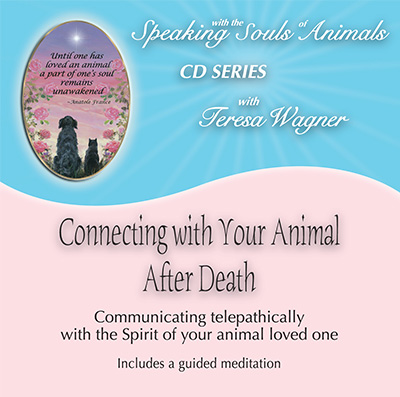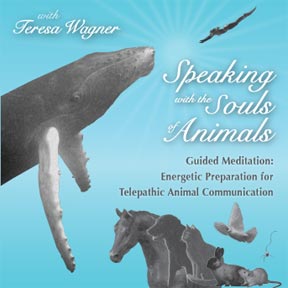Animal Welfare Issues
Compassion Fatigue Resources
Workshops on Compassion Fatigue:
Preventing and Healing Compassion Fatigue: The Inevitable Stress of Exposure to Others' Pain, Stress and Grief
Coping With and Healing Overwhelming Feelings Inherent in Animal Welfare and Activism
Books and Other Resources on Compassion Fatigue, Post Traumatic Stress, & Burnout
 |
www.rekindlesolutions.com Julie Squires, B.A. |
 |
The PTSD Workbook, Simple Effective Techniques for Overcoming Traumatic Stress Symptoms |
 |
I Can't Get over It: A Handbook for Trauma Survivors |
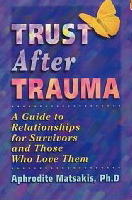
|
Trust After Trauma: A Guide to Relationships for Survivors and Those Who Love Them |
 |
The Highly Sensitive Person's Survival Guide |
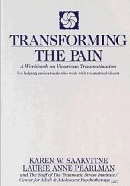 |
Transforming the Pain |
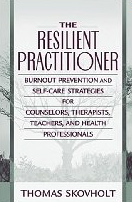 |
The Resilient Practitioner, Burnout Prevention and Self-Care Strategies |
 |
Managing Traumatic Stress through Art: Drawing from the Center |
 |
The Way of the Journal: A Journal Therapy Workbook for Healing |
Books on Understanding Shelters and Shelter Work
. . .which can be very affirming and comforting to those
who work in shelters and do rescue work
(also great books to give as gifts to help educate friends and family about what you do, and the plight of homeless animals)
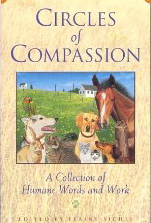 |
Circles of Compassion A Collection of Humane Words and Work |
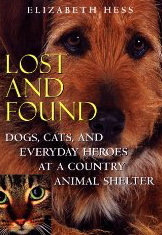 |
Lost and Found, Everyday Heroes At a Country Animal Shelter |
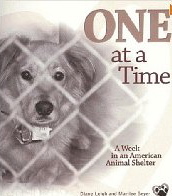 |
One at a Time, A Week in an American Animal Shelter |
 |
Bridging the Bond: The Cultural Construction of the Shelter Pet |
Books About the Impact of Early Animal Protection Laws
"These books are a fascinating read about how early animal protection laws were first employed to help a severely abused child (in the 1800’s) before there were child protection laws on the books. It's a story that most people are not aware of, but many shelter workers can take pride in our early beginnings to see how our work can have positive effects on people as well as animals."
~Lisa Hoefler, Director of Operations, SPCA of Monterey County, CA
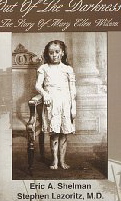 |
Out of the Darkness: The Story of Mary Ellen Wilson |
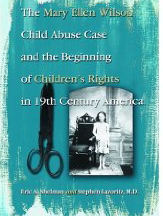 |
The Mary Ellen Wilson Child Abuse Case and the Beginning of Children's Rights in 19th Century America |
COPYRIGHT AND AUTHORSHIP NOTICE: The information contained in this Compassion Fatigue section of my site was originally written in 1994, has been updated several times and has been copyrighted since its inception. In July 2015, Judy Scheffel used the material on these pages as if it was her own, violating copyright law and a written agreement to use it only with attribution, for a webinar organized by Lisa Levinson and sponsored by In Defense of Animals. A video of the webinar, in which Scheffel plagiarized thousands of words from this site and deceptively presented the models in these pages as if they were her own original concepts, appeared on the In Defense of Animals web site and on YouTube until August 20, 2016.
If you participated in this webinar or viewed it on YouTube, please be advised that authorship of approximately 80% of the webinar content includes material copyrighted by Teresa Wagner and was used fraudulently by Judy Scheffel.
|
|
What is Compassion Fatigue?
How is it different from everyday stress and how do I know if I have it?
There are many terms to describe the pressures we feel from life in general and from our work. Ultimately, words and labels don't matter. In themselves they certainly don't fix anything. However, sometimes the use of language to describe the specificity of what we feel and experience can help us understand and even uncover what we're going through much more clearly. This clarity, in turn, can help us take the most appropriate action to heal.
In that light, here are some terms which may help you discriminate your experiences in animal care:
STRESS is when we're feeling the tension of the everyday pressures of the job and life, but we're handling it. Selye showed us that we can experience virtually any physical symptom in response to stress."Stress is the non-specific response of the body to any demand placed upon it." (Selye)
BURNOUT is when we doubt our ability to keep coping constructively with the pressures. It is more intense and debilitating than stress."Burnout is the development of a negative self-concept and negative attitude towards work, people involved in the work, life itself, and a severely hampered ability to cope with the work environment." (Pines and Aronson 1988)
PTSD (post traumatic stress disorder) differs from stress and burnout in its cause— it's in response to trauma, not everyday situations."Post traumatic stress is a normal reaction to abnormal events, a reaction to experiencing an event outside the range of usual experience that would be markedly distressing to almost anyone.: (APA Diagnostic and Statistical Manual IV 1994)
STSD (secondary traumatic stress disorder) The stress resulting from working with trauma victims
COMPASSION FATIGUE is an accepted alternative term for secondary traumatic stress disorder."Compassion Fatigue is the natural consequence of stress resulting from caring for and helping traumatized or suffering people." (or animals) (Figley 1993)
I believe that the majority of front line workers in animal welfare organizations suffer from traumatic stress and compassion fatigue. Why? Because the work is the most emotionally complex and morally challenging of any trauma worker role in our society. Remember, compassion fatigue is different from burnout in that the cause of compassion fatigue is always related to caring about, taking care of, or exposure to trauma victims, while burnout can result from any type of stress. For more than ten years I worked for a Fortune 500 corporation and facilitated stress management seminars for executives. They were not suffering from compassion fatigue, but from stress and burnout. Their stress was not caused from caring about the suffering others. Yours is. Compassion fatigue is unique to certain roles and situations.
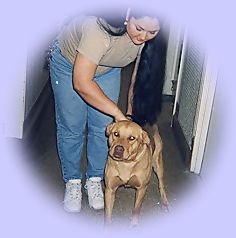
Post traumatic stress is experienced by the direct victims of trauma (in shelter and rescue situations, the animals). Secondary traumatic stress (compassion fatigue) is experienced by those who help and are exposed to these victims of trauma. As many of us know, being around the pain and suffering of others can be "emotionally contagious." It's difficult to see and care deeply about the suffering of others without feeling some pain ourselves.
The symptoms of PTSD and compassion fatigue are the same and can include: recurrent nightmares, recurrent and intrusive distressing recollections of the trauma, flashback episodes, intense psychological distress at exposure to cues that symbolize or resemble an aspect of the traumatic event, restricted range of feelings (i.e. blocking feelings), difficulty falling or staying asleep, irritability or outbursts of anger, difficulty concentrating, hyper vigilance and exaggerated startle response.
The factors impacting the severity of these traumatic stress symptoms include: the duration of the experience/exposure, potential for recurrence, degree of exposure to death, dying and destruction, degree of moral conflict inherent in the situation, and the extent to which the role is direct or indirect. Every one of these factors exists in the shelter/animal control/rescue workers job:
- Caring for traumatized animals is a daily event, not occasional. It is on going, not episodic.
- Exposure to death is frequent at many shelters
- Degree of moral conflict is extremely high for humans who deeply love animals and are in a role of choosing who will live and who may die, and are in the role of personally performing euthanasia
- Their role is seeing these animal victims of trauma is direct and hands on, along with direct and on-going exposure to the very perpetrators of animal abandonment, neglect or abuse

It is not surprising that shelter workers' scores on a Compassion Fatigue Self Test (Charles Figley 1995) are extraordinarily high. Figley's test scores are clustered in categories of extremely low risk, low risk, moderate risk, high risk and extremely high risk. In over 350 of these tests administered in my Compassion Fatigue workshops for shelter staff, every single shelter workers' score was in the extremely high risk range. Clearly, the shelter/animal control/rescue workers of our communities pay a very high emotional price for the care they give our homeless, abandoned, neglected and abused animals. To take a compassion fatigue self test, go to: http://www.proqol.org/ProQol_Test.html. The test was not created for animal care workers, but for workers who help humans. To make the items relevant to you, just replace the words person or people with animal where appropriate. You can also find the test in the highly recommended book Compassion Fatigue in the Animal Care Community by Figley and Roop: (NOTE: sadly, this book is currently out of print)
When looking at your test results, please keep the following in mind:
- Compassion Fatigue is a term, not a disease! It is simply a label to help us identify where we may benefit from healthy changes in our life. Having a high score does not mean "you are in trouble." Having a high score may mean that there are a number of issues related to your stress that warrant your attention. There is no need for alarm, only awareness.
- Some people report that their scores simply confirm what they already know. Others are surprised. Many people did not previously know that certain symptoms they experience were related to the stress of their work. If this is the case for you, then the test was worth taking! The "surprises" can serve as alerts to what needs your attention.
- If you feel uncomfortable or anxious about your scores, it may be because the items and scores force you to look at what is causing you pain and how you react to it "in the light of day." In the stress and business of animal care work, there's not a lot of time to sit around and reflect on your feelings. A common and understandable coping mechanism in this field is to stuff the overwhelming emotions so you can keep going. So, if the test upsets you, it may be because it's the first time in a long time you've looked at how your work is impacting you emotionally. Taking a test like this can be like trying on a bathing suit in one of those brightly lit dressing rooms in stores ("My God are those really my thighs!"). Or, it can be like looking at a photograph of yourself realizing how happy (or not happy) you were at the time it was taken. Taking a close look at ourselves is not always easy. If as a result of the test, you see things you don't like, let it serve as a gentle motivation to change. Your work is incredibly difficult. Most people in your line of work do have high scores. It does not mean anything is wrong, it is merely an assessment of what is, and an opportunity to perhaps being more self care.
- The scores don't matter. What matters are the items on the test which concern you. When you're done with all the scoring, go back through the items and look for the compassion fatigue items which create stress for you and circle them. Use this information as a baseline, not to judge yourself, or to feel scared about, but just as information. Just as you when we get on the scale and see ten pounds more than we'd like, we can either use those numbers to feel badly, or use as information to inspire us to change. Look at the items which concern you the most.
It's a given that compassion fatigue is common among animal welfare workers. It's important to love yourself as much as you love the animals, to take care of yourself as well as you care for the animals.
COPYRIGHT AND AUTHORSHIP NOTICE: The information contained in this Compassion Fatigue section of my site was originally written in 1994, has been updated several times and has been copyrighted since its inception. In July 2015, Judy Scheffel used the material on these pages as if it was her own, violating copyright law and a written agreement to use it only with attribution, for a webinar organized by Lisa Levinson and sponsored by In Defense of Animals. A video of the webinar, in which Scheffel plagiarized thousands of words from this site and deceptively presented the models in these pages as if they were her own original concepts, appeared on the In Defense of Animals web site and on YouTube until August 20, 2016.
If you participated in this webinar or viewed it on YouTube, please be advised that authorship of approximately 80% of the webinar content incluces material copyrighted by Teresa Wagner and was used fraudulently by Judy Scheffel.
Flower Essences to Support
the Healing of Compassion Fatigue
Flower essences are natural healers for our emotions—without any of the side effects associated with psychotropic drugs. They are the ultimate form of self help: you can choose, buy and take the essences without anyone else's guidance; they cost very little money; they have absolutely no harmful side effects; you can take them with any food, drinks, supplements or prescription drugs without any contraindications. All you need to start is a list such as this one (or a book if you like, two of which are listed below), a desire to prevent and heal compassion fatigue, and a source to buy the essences.
To gain the greatest healing benefit, carefully match your specific feelings or current state to the healing qualities of the essences described below (or in other flower essence literature). Sometimes, the feelings and phases of our compassion fatigue experiences will change from day to day, week to week. For greatest benefit, re-select essences to match your changing feelings and evolving process. There are many essences listed and described below for on-going future reference, followed by background information on flower essences, how to use them, and ordering information.
How to take flower essences? Very easily: four drops under the tongue, four times a day.
To learn more visit the flower essence section of the site.
The essences I most frequently recommend for compassion fatigue are those which address the recurring emotions so common to animal welfare work:
- Post Trauma Stabilizer for traumatic stress
- Glassy Hyacinth and Green Cross Gentian for recovery from anguish from exposure to horror
- Borage and Bleeding Heart for grief
- Mountain Pride for anger
- Red Chestnut, Mountain Pennyroyal, and Scorpion Weed for guilt.
Where to Buy Flower Essences
- Your local health food store
- Flower Essence Services (FES) www.flowersessence.com or 800-548-0075
- FES carries all of the English (or Bach) essences, and at a lower price
- Desert Alchemy Flower Essences www.desert-alchemy.com or 520-325-1545
Acute Stress, Crisis, Trauma
- Five Flower Formula/Rescue Remedy: (for help in the moment)
-
These two remedies have the exact same ingredients--each is a composite of five different flower essences. Rescue Remedy is made by Bach and Five Flower Formula is made by FES. They bring calmness and stability in any time of physical, emotional, mental or spiritual distress. During moments of fear or panic, they can bring us back to center, to knowing we will be OK. When we wonder how or if we will make it through a critical situation, taking a few drops can be soothing and stabilizing. They are well known for the support they provide in dire emergencies (there are many stories, for instance, of these essences stabilizing severely injured animals, helping them stay alive until medical intervention is available or begins to work (see resource listing of web site stories). These "emergency formulas" are also useful for the less dramatic but still very uncomfortable stressful moments of life. They help bring the body and mind back to calm. (from Bach and FES)
- Post Traumatic Stabilizer: (for help in the moment & on-going help after a traumatic event)
-
For most people trauma is an infrequent or rare life event: war, fire, auto accident, assault, etc. For those who work in trauma worker roles (i.e. police, fire fighters, emergency medical technicians, animal control and shelter workers) exposure to the pain associated with traumatic crisis is part of everyday life. For many animal welfare workers trauma is a common, even daily event: sensing the emotional pain of animals who are abandoned by their people, choosing which animals will be euthanized, performing euthanasia, seeing animals go "cage crazy" who've been kenneled too long, seeing and caring for animals who have been starved, abused, used in animal fights, wildlife harmed or killed by human impact, etc.
This essence can be taken at the time a traumatic situation occurs to soften the debilitating effects of natural, very strong emotional responses. It can also be taken to help release the effects of past trauma. Sometimes, the pain of a past trauma in our lives (related or unrelated to our animal work) can be re-triggered by another trauma occurring in the present. Symptoms of post traumatic stress can include recurrent nightmares, recurrent and intrusive distressing recollections of the trauma, flashback episodes, intense psychological distress at exposure to cues that symbolize or resemble an aspect of the traumatic event, restricted range of feelings (i.e. blocking feelings), difficulty falling or staying asleep, irritability or outbursts of anger, difficulty concentrating, hyper vigilance and exaggerated startle response. This essence helps us cope with and heal the emotional and physical symptoms of exposure to trauma, and can begin to heal the effects of past trauma. HIGHLY RECOMMENDED, taken by itself or in conjunction with Glassy Hyacinth.(from FES)
- Glassy Hyacinth:
-
This essence has been used successfully to help both survivors and relief workers in war zones. For those who witness abhorrent cruelty, violence, depravity or carnage it restores strength and hope to the soul. HIGHLY RECOMMENDED for shelter workers who euthanize animals, for animal control officers and humane investigators who encounter cruelty and abuse first hand, for any witnessing of or hearing about treatment of animals which breaks our hearts. Because seeing such horror is so unnatural, it's normal to block our deepest feelings of response. But internalizing the horrific trauma of the job can only be short term, it is bound to come back later as more complicated post traumatic stress. There is no escaping the need to process emotional pain. Glassy Hyacinth helps us do so with gentleness. It restores our equilibrium, heals our hearts so we can continue our important work with inner peace. Effective taken by itself, with PTS Formula, or with Star of Bethlehem. (from FES)
- Green Cross Gentian:
-
There are times in the life of all people who work for the animals that it seems we can't go on, when we feel helpless and broken, seemingly unable to make things better for the animals, wondering if the world will ever, ever change for the good for the animals of the earth, wondering if the forces of negativity are greater than any of us can ever overcome. It may be from a particularly horrible event in which an animal suffered despite your efforts to prevent that suffering. Or it may just be a time when you wonder if you efforts make a difference when you see continued suffering, and some humans' indifference to that suffering.
This essence is extremely powerful in bringing us "hope and resolve for world service and healing despite setbacks or challenges, during which we may feel despair, defeat, bereft or discouraged." Patricia Kaminski, Co-Founder, FES
- Star of Bethlehem:
-
One of the essences in Rescue Remedy and Five Flower Formula, it is a deeply restorative remedy, bringing calm, soothing, healing qualities, comfort and reassurance from the spiritual world. Can be especially helpful when we feel in shock, or greatly overwhelmed. (from Bach and FES)
Anger
- Scarlett Monkeyflower:
-
Helps us express anger in appropriate ways, rather than stuffing it inside or exploding when we can no longer hold it in. There's so much legitimate anger in animal welfare work that has no appropriate direct avenue of expression to those with whom we're angry: To represent our organizations responsibly and to attempt to educate the public, we have to be nice to the person who brings in the puppy who's not house broken in two days and now wants another one, we have to be nice to people who haven't fed their starving horses, . . .we have to be nice in the face of irresponsible and sometimes harmful treatment of animals. The anger this naturally creates in us can eat us alive if untended. Scarlett Monkeyflower helps us accept the naturalness of our anger and opens us up to express it in healthy ways, releasing the pressure of holding it in and the shame of exploding. (from FES)
- Mountain Pride:
-
An important remedy for activists who passionately want to help change the world to be a better place for animals, yet at times, understandably, withdraw in the face of the overwhelming challenge. . . having a hard time integrating a sense of inner peace with standing up for one's convictions. This essence helps give us courage to take a stand in the world as agents of healing and change for the good. It helps us "learn to transform feelings of dissatisfaction or disillusionment with the world into positive energy for change." Patricia Kaminski, Co- Founder of FES (from FES)
Anxiety, Overwhelm, Emotional Upheaval in General
(also see Acute Stress, Crisis and Trauma)
- Chamomile:
-
Helps us when we are emotionally upset, nervous or tense, especially when our tension is accompanied by stomach distress such as gas or vomiting. Helps us feel calm, serene and more emotionally balanced. (from FES)
- Lavender:
-
Helps when we feel mentally or physically "wound up," keeping us up nights, or feeling we are absorbing more energy than we can process through the body. Helps tension that is accompanied by headaches, vision problems, or neck and shoulder tension. Lavender helps sedate and soothe, and moderates and regulates energy. (from FES)
- Cherry Plum:
-
This essence brings strength and encouragement at times of extreme tension, fear, pressure or stress. It helps stabilize the mind when we're emotionally overwrought, helping us cope with challenge. Often called the "let go and let God" essence, it helps us re-connect with a Higher Power, or our Higher Self, surrendering to the knowledge that this level of help is always there. (from FES)
Fatigue, Burnout, Need for Rejuvenation
- Aloe Vera:
-
This essence is helpful for those who overuse their fiery, creative forces, becoming workaholics whose drive is so intense that they neglect their emotional and physical needs, draining themselves of vital energy needed from rest, food, and social contact. While will power can carry such persons quite far, eventually a point of exhaustion or burnout can occur. Aloe Vera brings back the qualities of renewal and rejuvenation. (from FES)
- Olive:
-
Relieves physical symptoms of utter fatigue, exhaustion and weariness. Heightens awareness that the physical self is profoundly connected with higher states of soul-spiritual consciousness, providing renewal and restoration from within and without. (from FES)
- Woven Spine Pineapple Cactus:
-
Helps when we feel completely overwhelmed, exhausted and burned out, tired at the root of our being, or so overburdened that we feel we can't go on. This essence revitalizes us at the core of our being, bringing courage, perseverance, self confidence and release of issues that may be blocking our life force. It shows us that we can always take one more breath and receive rejuvenation in this very moment. (from Desert Alchemy)
Feeling & Taking on the Pain of Others as Our Own;
Emotional Vulnerability; Need for Emotional Protection
- Pink Yarrow:
-
This is a classic essence for emotional protection. For those of us who can be sponges for others' energy, who are naturally empathic or sensitive, it helps us create appropriate emotional boundaries with others. It allows us to feel authentic compassion and connection with others (animals and people) without dysfunctional merging with, or taking on their pain or other energy. (from FES)
- Golden Yarrow:
-
This essence is not as much about taking on others' energy, as the Pink Yarrow is, but more about helping us not feel drained in the face of so much energy of others. Very sensitive souls at times may shy away from exposure to and intimacy with others because doing so often makes them feel as if they lose part of themselves in the process. Golden Yarrow helps us know that we can preserve the integrity of the Self, even when involved with others, that we don't have to isolate and withdraw to feel safely ourselves. If you avoid spending time with others because it leaves you drained and tired, this essence can help you. Likewise, if you can't avoid being around others on the job, and it drains you, this essence can help you. (from FES)
- Red Chestnut:
-
Is very helpful when we feel obsessive fear or worry that we have not done enough, that it's our job to save the animals and that if we don't we've failed. It is also particularly helpful for those who feel they must "save them all" and feel guilty when they can't. Red Chestnut helps us let go of an overexaggerated sense of obligation that goes beyond what any one person can do, or a drive to help others at the cost of ourselves. It helps us know when we've "done enough"--for that day, or for that animal. It helps us remember that it is OK for us to have a life for ourselves, beyond giving to animals or others. Red Chestnut can also deepen and restore our trust in a Divine source of support for the animals we love, helping us remember we are not the only source of their support. (from FES)
Grief:
- Borage:
-
This essence helps us overcome feelings of depression and heavy-heartedness associated with the sadness and grief of separation or death. Borage brings courage and a sense of upliftment and buoyancy. Though depression from grief is a natural state, a natural cycle of emotional life, Borage helps us to not get stuck in the weight of it, but to move through it quickly. (from FES)
- Bleeding Heart:
-
For any of us who know ourselves to feel grief at partings and separation, who feel it deeply, Bleeding Heart is balm to the soul. It helps us move through the pain more softly and quickly. It helps us remember, truly remember in our hearts that the loss is only of the physical connection, not the spiritual, and that the gifts of the spiritual connection with an animal we've loved remain in us, even when their physical form is gone. Especially helpful when an animal we've been attached to (fostered, rescued, just plain fell in love with) has died from euthanasia or other causes, or even when they've been adopted out (or wildlife released to the wild) and we miss them. Bleeding Heart helps us accept the change in form of a relationship, to let go, and release our attachment to the physical form. It helps us accept that they have died (or been placed, released, etc.) while still fully feeling the spiritual connection of love. (from FES)
- Forget-Me-Not:
-
Deepens our awareness of our spiritual connection with those who have physically died and helps us develop telepathic communication with them. (from FES) Love Lies Bleeding: Helps us with profound feelings of melancholia and anguish, especially when the soul suffers privately and is cut off from others. It also helps us find transpersonal meaning from pain and suffering. (from FES)
- Sagebrush:
-
When we are having trouble accepting death and tragedy, this essence helps us heal the pain and emptiness from any kind of loss. (from FES)
- Chrysanthemum:
-
Helps us accept the transitory nature of earthly life and helps us heal any fears and avoidance of physical death. This could be especially helpful for someone who has fears about euthanasia. (from FES)
Guilt
- Mountain Pennyroyal and Pink Monkeyflower:
-
Deeper, and more profound perhaps, than guilt is shame. Guilt may be what we feel from our own inner questioning of right and wrong. Shame is more likely what we feel as a result of others' views of us, or concern of others' views of us. In the heated controversy of euthanasia, there is, tragically, much mud slinging directed toward workers who euthanize animals, and toward agencies that euthanize. Ironically, the harsh criticisms often come from the very people who contribute to overpopulation by buying from breeders or pet stores, by not spaying and neutering, or who've surrendered their animals to shelters, yet somehow still hold shelter workers responsible for "finding homes for them all." I've heard horror stories of shelter workers sitting in restaurants, being in line at movie theaters, or walking through a mall and having someone call out "there's a dog killer!" or other cruel comments. Sadly, moral judgment also sometimes comes from "no-kill" groups, who do not euthanize animals but who do turn them away when their kennels or foster homes are full, often resulting in the animals ending up in a shelter that does euthanize. When "no-kill" literature and other PR pronounces over and over that "we don't kill animals," it insinuates that shelters which euthanize do so frivolously, without love or concern for the lives of animals. There is also at times the insinuation (or statement) that "no-kill" groups have solved the overpopulation problem. It's not solved. Everyone is working hard, and thankfully sometimes more collaboratively despite philosophical differences, but the problem is not yet solved. In the midst of the political debate and the moral dilemma of trying to save lives, (and all groups are working to save lives), it is the workers in shelters that euthanize who receive the blame, often by both the public and other animal groups. This misdirected blame can turn into a horrible sense of internalized shame and dishonor for these workers.
Mountain Pennyroyal gives us the clarity of mind to expel any guilt and shame directed at us. It gives us the strength to protect ourselves from the criticisms, negative thoughts and harsh judgments of others, to see them as someone else's thoughts and beliefs, rather than internalize them as our own. (from FES)
Pink Monkeyflower helps us heal the deep pain that shame can bring,, allowing us to recover from such shame, and to restore our own sense of worthiness regardless of others' opinions. (from FES) HIGHLY RECOMMENDED for any workers who have felt a sense of shame associated with their work.
- Scorpion Weed:
-
This essence brings healing to the heart of those who feel they may never be forgiven for things they have done. HIGHLY RECOMMENDED for those involved in euthanasia and are haunted by beliefs that they have "sinned" or wonder if they are good enough to "go to heaven."It's one thing to believe that peaceful euthanasia for an animal is sometimes better for them than living out life in a cage or in the streets until there are enough homes for them all. It's an entirely different thing to actually perform euthanasia. To do so takes immeasurable moral courage and emotional fortitude. This essence helps you trust in your own essential goodness while living in the midst of such a moral dilemma, bringing you back to self understanding and self forgiveness. (from Desert Alchemy)
- Red Chestnut:
-
Is very helpful when we feel obsessive fear or worry that we have not done enough, that it's our job to save the animals and that if we don't we've failed. It is also particularly helpful for those who feel they must "save them all" and feel guilty when they can't. Red Chestnut helps us let go of an overexaggerated sense of obligation that goes beyond what any one person can do, or a drive to help others at the cost of ourselves. It helps us know when we've "done enough"--for that day, or for that animal. It helps us remember that it is OK for us to have a life for ourselves, beyond giving to animals or others. Red Chestnut can also deepen and restore our trust in a Divine source of support for the animals we love, helping us remember we are not their only source support. (from FES)
- White Chestnut:
-
Is helpful in releasing anxious, repetitive thoughts such as "Oh my God, why didn't I. . .", or "If only I had done such and such." When you can't sleep, when you're so mentally wound up, agitated and worried with repetitive thoughts about an animal or some other issue that you may not have handled perfectly, White Chestnut can help you regain a calm, clear mind and sense of peace. Sometimes, we don't handle a situation as well as we could have. "Mistakes" are great fodder for learning, but not when we beat us ourselves up so much we feel only guilt. This essence helps us learn from a place of calm and clarity. (from FES)
- Pine:
-
"Did I do the right thing in a certain situation?" "If only I would have. . ." If White Chestnut clears the mind from such repetitive thoughts, Pine clears the heart of self-deprecation and the emotional paralysis that guilt can create. It helps us move from being emotionally stuck in self blame, remorse or regret to a state of self-forgiveness and self-acceptance (from FES)
Hard Time Letting Go of Overworking, Being Overcommitted
- Red Chestnut:
-
Is very helpful when we feel obsessive fear or worry that we have not done enough, that it's our job to save the animals and if we don't we've failed. It is also particularly helpful for those who feel they must "save them all" and feel guilty when they can't. It helps us let go of an over-exaggerated sense of obligation that goes beyond what any one person can do, or a drive to help others at the cost of ourselves. It helps us know when we've "done enough"--for that day, or for that animal. It helps us remember that it is OK for us to have a life for ourselves, beyond giving to animals or others. It can also deepen and restore our trust in a Divine source of support for the animals we love, helping us remember we are not the only source of their support. (from FES)
- Elm:
-
Sometimes our desire to help and serve others can result in feeling overwhelmed-- when we end up with too many duties and responsibilities, or feeling unequal at times to completing all the tasks. This can be created by too high a work load, or from our own over-perfectionist or unrealistic goals. Elm helps us integrate our desire to serve with our own equally important need for balance. This essence can help us to shift our identities from hero or rescuer with limitless energy to our true human energy and its natural limitations.(from FES)
- Centaury:
-
Brings inner strength to those who have trouble saying "No." Also brings a healthy recognition of our own needs even while serving others. Helps balance the ego forces of those who may consciously or unconsciously rely on pleasing others to receive self-validation. (from FES)
- Jumping Cholla Cactus:
-
This essence is a great antidote for when we find ourselves rushing around feelings feeling frenzied, driving ourselves relentlessly to accomplish things, and becoming easily annoyed at people and events which stand in the way of us completing our many tasks. Sometimes keeping ourselves busy rushing about is easier than facing our feelings. This essence helps us slow down and create more harmony and balance in our lives. (from Desert Alchemy)
Helplessness, Frustration, Loss of Faith & Hope, Alienation
- Gentian
-
This essence is specifically for when we feel helpless and discouraged after a setback or problem occurs. It helps us shift our mental perspective and see the long view when we start asking ourselves questions such as "does my work really make any difference?," "will things ever get better for the animals?" Gentian brings us perseverance and faith to continue despite apparent setbacks in circumstances or discouragement in our hearts. (from FES)
- Penstemon
-
Sometimes we are dealt unfair blows in life--on the job or personally. Sometimes we are legitimate victims of circumstance and it is a struggle to get beyond feeling sorry for ourselves. In the periods of pain and frustration this can bring, we need perseverance and great inner fortitude. Penstemon has enormous strengthening powers, enabling us to tap into reservoirs of courage and resilience. (from FES)
- Sweet Chestnut
-
When we are at the breaking point of endurance, feeling strong despair and anguish, or suicidal, Sweet Chestnut brings us courage and faith to move through the "dark night of the soul" to trusting again in good and in spiritual guidance and protection. (from FES)
- Shooting Star:
-
When we are feeling as if we live in a world or culture which doesn't understand, accept or acknowledge the deep love we have for animals, when we feel like we may not fit here, or have a place: Shooting Star helps us heal a profound feeling of alienation, especially not feeling at home on earth, nor a part of the human family. It can be especially helpful when we feel more a part of the animal kingdom than part of humanity. (from FES)
Numbing Oneself to Pain:
Putting up walls to Avoid it. . . or Holding it in
- Dandelion:
-
When we are having difficulty expressing or releasing our feelings, Dandelion helps us release feelings of grief or pain that are stuck in the body. Especially helpful when we know our emotions are making us feel tense in the body. (from FES)
- Fuchsia:
-
Helps us get in touch with feelings of pain which may be repressed, perhaps when we long to express our feelings but are afraid of being overwhelmed by them. This essence is especially helpful for those who cry easily or have psychosomatic symptoms, yet do not access their most authentic, deep seated emotional pain. (from FES)
- Golden Ear Drops:
-
Helps us release tears of grief that may be held back. Can be especially helpful when a current crisis or loss is bringing up pain from past crises or losses. (from FES) Yerba Santa: Helps us build our capacity to express a full range of emotion, especially when emotional pain has been internalized or constricted in the heart and chest area. (from FES)
When Passionate Idealism Makes Us Overbearing
- Vervain:
-
Many of us devote a great deal of our life energy to the cause of helping animals. Sometimes, our great passion and enthusiasm to effect change can seem overbearing to others. Our intensity can turn off family, friends, peers and the very people we're trying to influence to change. Vervain can help us be more grounded and moderate in the expression of our ideals, resulting not only in greater acceptance of our message on the part of others, but also in less tension within ourselves. (from FES)
What are Flower Essences?
Flower essences are gentle yet powerful liquid infusions of flowers, generally taken orally from glass dropper bottles, which assist in the healing of emotional and spiritual imbalances. For centuries, the healing properties of plants have been used in various forms to support the physical, emotional and spiritual health of humans and animals: Herbs and herbal tinctures are typically used to support physical health, using any or all parts of plants including leaves, roots, stems and sometimes flowers. Aromatherapy, typically in the form of essential oils, utilizes the fragrance of plants to help us balance physical and emotional issues through our sense of smell. Flower essences are different from both of these in that only the flower of the plant is utilized, there is no scent, and they assist primarily with the healing of emotional and spiritual imbalances, versus the physical. They are each quite powerful in their ability to heal! I include only flower essences here because I've studied and used them extensively enough to make specific recommendations.
We are very fortunate to be living in a time when thousands of essences are available for our use, made by quality people and organizations around the world. Though Dr. Edward Bach pioneered the use of the well known Bach flower essences in the 1930's in England, in more recent years dozens of others have developed flower essences in various parts of the world. Flower essences are very inexpensive, typically $6.95 to $15.00 per bottle.
.
How to choose Flower Essences
Read through the descriptions casually at first, perhaps checking off any that seem to apply to you. Because of the on-going crisis, trauma orientation of animal welfare work, you may see yourself checking off most of the essences! That's common! To determine which ones will help you the most, are most relevant to you now, go back and read the ones you've checked again. Look for the subtle differences in the essences under the categories relevant to you (i.e. there are different types of guilt, different manifestations of anger, different reasons we overwork). Reading the words, see which ones are most descriptive of you. If there are still many issues relevant to you, ask yourself which are the priorities, which ones bring you the most pain or tension which you'd like to heal. Also, keep your heart and intuition open to feeling which ones are best for you. Sometimes it helps to put the list away for a few days, and come back to it with a fresh perspective. If you feel you'd benefit from professional guidance in choosing the best essences for you, see the information under Flower Essence Practitioners.
How much to take
Flower essences come in glass dropper bottles and are taken just a few drops at a time, typically under the tongue, about four times a day. Frequency of taking essences is much more important to their effectiveness than quantity. There is no possibility of "overdosing", because taking large doses of flower essences cannot hurt us. It is, however, a waste of the essence to down large quantities since only small amounts taken several times a day is all that is needed. When you feel particularly stressed, taking several drops every few minutes is helpful. You can also put a few drops in a glass of water and sip it over several hours.
There are no contraindications
Flower essences are powerful but very gentle. Taking them will not in any way impact other medications. There are no foods, liquids, traditional medicines or holistic remedies that must be avoided while taking flower essences. They work powerfully, but more slowly than drugs Be patient! Even though some essences such as Rescue Remedy and Five Flower Formula bring immediate relief and calm in crisis, please remember, these are not drugs designed to quickly mask symptoms. They are healers of root causes. It can take a few weeks before we feel change or see progress.
Workshops and Articles
- Flower Essences for Animals and People
- A workshop with Teresa Wagner
- Flower Society www.flowersociety. org/Animals.htm
- One of FES's web sites. You'll find a series of short articles on the use of flower essences with animals. Several cases of use in a wildlife rehabilitation facility are sited. They are the premier organization from which to get in-depth training as a flower essence practitioner.
- Desert Alchemy www.desert-alchemy.com
- Another source for in-depth training and education about flower essences
Books
|
Flower Essence Repertory, Patricia Kaminski, Richard Katz HIGHLY RECOMMENDED An excellent resource describing FES essences in detail, referencing emotional and spiritual issues in need of support matched to flower essences. It is a book like this which allows anyone unversed in flower essences to use them effectively and confidently. Written by the founders of the Flower Essence Society and creators of FES essences. |
|
|
The Alchemy of the Desert: A Comprehensive Guide to Desert Flower Essences for Professional and Self-help Use, Cynthia Athina Kemp Scherer HIGHLY RECOMMENDED. This book is formatted in a helpful encyclopedic manner, describing Desert Alchemy essences in detail, and referencing emotional and spiritual issues in need of support matched to flower essences. It is a book that helps anyone unversed in flower essences to use them effectively and confidently. Written by the creator of the Desert Alchemy flower essences. |



